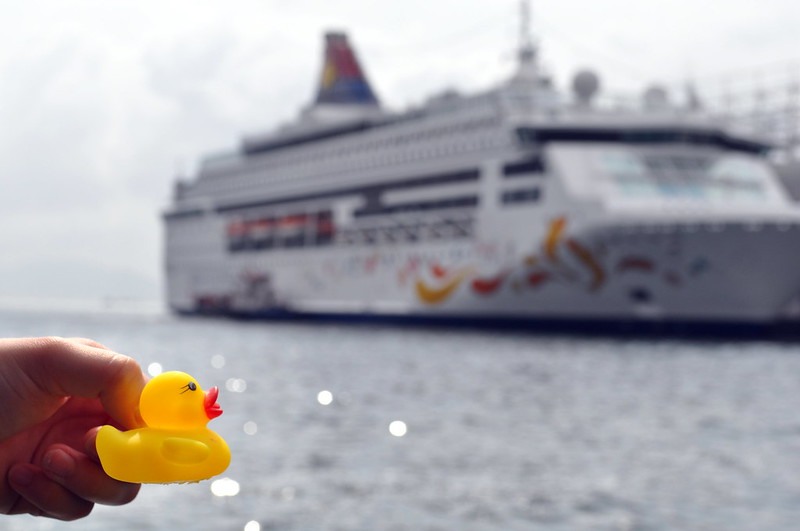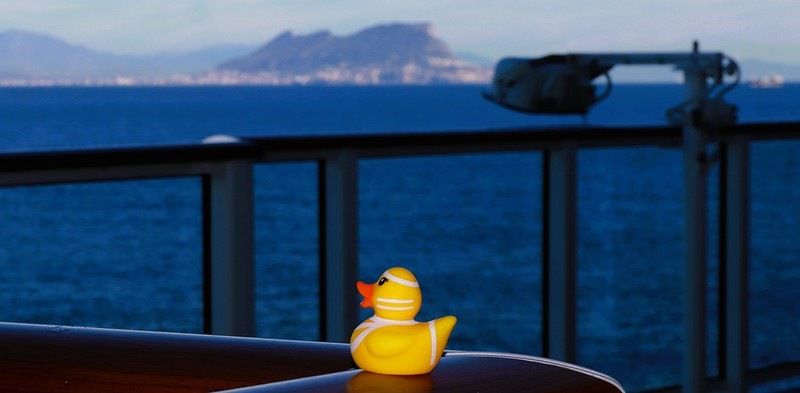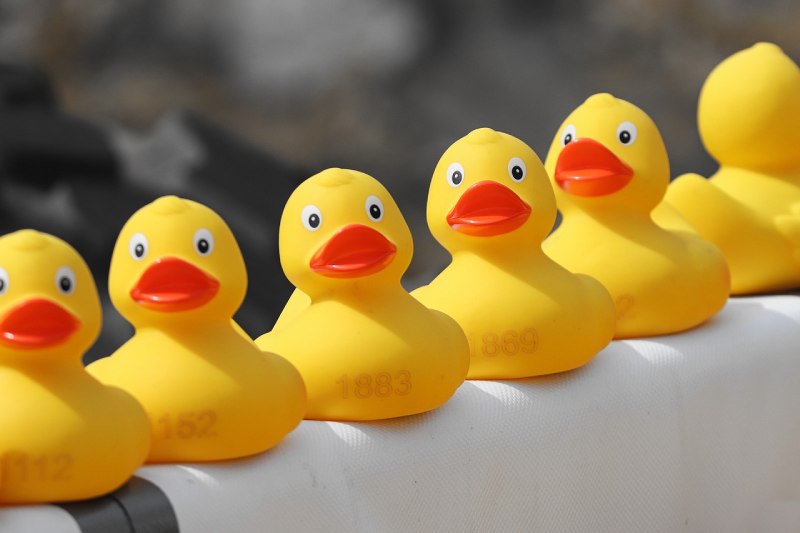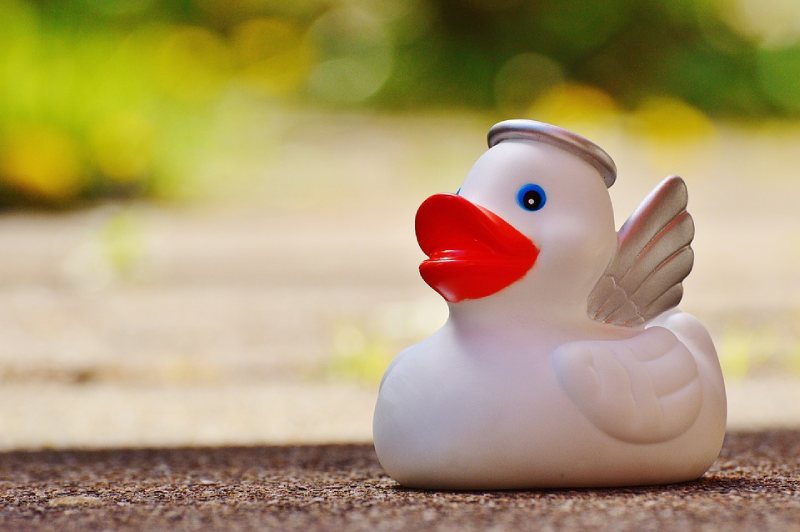Have you ever stumbled upon a hidden rubber duck while on a cruise and wondered what it’s all about? Welcome to the world of cruise ducks, a fun and popular trend that’s captured the hearts of cruisers in recent years.
What Are Cruise Ducks?

Cruise ducks are small rubber ducks that passengers buy and hide around the ship for others to find. Each duck is usually tagged with a note that might share where the duck came from or instructions for what to do upon finding it. It’s a fun, unspoken rule that once you find a duck, you can either keep it as a souvenir or re-hide it, allowing the fun to continue for others.
This activity transforms the cruise ship into a massive scavenger hunt without any clues, fostering a sense of surprise and community among passengers. Finders of these ducks typically share their discoveries on platforms like Instagram or specific Facebook groups, using hashtags like #CruisingDucks or #CruiseDucks. Some even take the ducks on their future cruises, documenting their travels and sharing the journey online.
At its core, cruise ducks serve as a way to add an extra layer of enjoyment and connection among cruise-goers. Whether leaving a duck hidden for the next person to find or sharing the joy on social media, it’s a fun tradition that fosters a sense of shared adventure and community. It’s a way for passengers to connect, share smiles, and create lasting memories, all through the simple act of hiding and seeking little rubber ducks.
How Cruise Ducks Became a Sensation

Cruise ducks became a hit sensation thanks to Abby Davis, an 11-year-old girl who, in March 2018, took 50 rubber ducks on her cruise aboard the Carnival Breeze, departing from Galveston, Texas. Alongside her father, Ashley Davis, Abby hid 7 of these ducks every day throughout the duration of their voyage. This initiative led to the creation of a cruising ducks Facebook page. This group has since grown into a community of over 253,000 members who share the fun of hiding and finding ducks on cruise ships.
Interestingly, the idea of cruise ducks shares a connection with the painted-rocks craze, which is about hiding and finding decorated rocks. Both activities tap into the human instinct for exploration and the delight in uncovering hidden objects. Cruise ducks, much like the painted rocks craze, bring people together through the simple yet profound act of sharing hidden items.
Some cruisers recall finding rubber ducks on cruises as early as 2015. Although it wasn’t until Abby’s initiative in 2018 that the activity exploded in popularity. Since then, it has become a global phenomenon, with people from all corners of the world participating in the joyous pursuit of hiding and discovering these rubber ducks.
Rules for Hiding Cruise Ducks

Cruise ducks are a fun and popular activity where passengers hide rubber ducks around the ship for others to find. To participate, you can get special duck tags and passports by joining the ‘Cruising Ducks – Original Group’ Facebook group, which offers them for download. Or, you can buy these tags online or make your own. However, there are important rules to follow when hiding your ducks to ensure everyone’s safety and enjoyment.
Firstly, never hide ducks in places like pools, hot tubs, shops, or the ocean. These locations can pose safety hazards. For example, someone might get hurt trying to get a duck from a pool or hot tub, or it could look like theft if a duck is found in a shop. Also, accidentally dropping ducks into the ocean is harmful to the environment.
Ducks should only be hidden in public areas of the ship. This means avoiding private spaces such as restrooms, locker rooms, spa areas, and anywhere food is served, to maintain cleanliness and sanitation. Also, the ducks you hide shouldn’t be placed too high or in hard-to-reach areas, so they’re accessible to most passengers without the need to move things around.
Also, make sure that the tags or labels on your ducks are family-friendly, with no inappropriate content, as people of all ages may find them. This helps keep the game fun and suitable for everyone on board.
In summary, when hiding your cruising ducks, choose public spots where they are easily visible and reachable, avoid safety or sanitation risks, and ensure everything about the duck, including its tag, is appropriate for all ages. Following these guidelines will help everyone enjoy the hunt safely and respectfully.
Where Can You Buy Cruise Ducks?

Cruise ducks, which are simply plastic or rubber ducks, can be purchased from online stores such as Amazon, eBay, and Etsy. These platforms offer a wide range of designs, and it’s easier to buy them in large quantities compared to physical stores. You can also find them in gift shops and party stores, but the variety might be more limited.
If the ducks you buy don’t come with tags, there are plenty of tag templates available online. For example, the ‘Cruise Ducks – Original Group’ on Facebook has many you can use. If you’re feeling creative, there’s also the option to decorate or make your own ducks from scratch, although this could be too much work for some.
Types of Cruise Ducks

Cruise ducks come in a delightful variety of themes and styles, from festive rubber ducks dressed as Santa Claus to elegant ducks adorned with top hats. There are several types of cruise ducks, including Pirate, Christmas, Chef, Captain, Mermaid, Halloween, and Easter themed ones, to name a few. For those who prefer something simpler, plain cruise ducks are also an option.
Holiday ducks are particularly popular, matching the spirit of Christmas, Halloween, Easter, and other holidays. Additionally, many cruisers enjoy hiding ducks that reflect their personal interests or backgrounds. This could mean choosing a cowboy duck to represent Texas roots or a duck painted in the colors of a favorite sports team. Some even use these ducks to raise awareness for causes or to honor special individuals in their lives.
Creativity knows no bounds when it comes to decorating these ducks. Handcrafted crochet ducks are especially popular, with intricate patterns and vibrant colors that catch the eye. The sizes vary too, from tiny ducks that could fit in the palm of your hand to larger ones that are designed to stand out. However, it’s important to keep safety in mind and avoid making them too small, as they could pose a choking hazard for young children.
Personalizing your cruise duck is a fun activity, with stickers and various decorations available to make your duck truly unique. Whether you’re adding a bit of bling or going for a more casual look, customizing your duck allows you to express your personality and style in a playful way.
Where You Can Hide Cruise Ducks

Here are seven places where you can hide cruise ducks:
Public lounges and seating areas: Look for hiding spots on shelves, near tables, stairwells, elevators, and chairs, window sills, or in nooks within public lounges and seating areas. Atriums are also popular places for hiding cruise ducks. These places are often busy with people, increasing the chances of your duck being found.
Deck chairs on the promenade or pool deck: Tuck a duck in a spot where it can be discovered by someone taking a leisurely stroll or sunbathing. Just ensure it’s not in a position to blow away or cause a trip hazard.
Children’s play areas: This should be done carefully to ensure the safety of the children. If the ship has a dedicated play area or kids’ club, consider hiding a duck where it can be seen and reached safely by the little ones.
Café tables: Some cruise ships have small cafes or snack areas with tables. You might leave a duck at a table, perhaps near the condiment area or on a window ledge. However, make sure to avoid direct contact with food for health reasons.
Fitness center: Consider hiding a duck in a less trafficked area of the fitness center, such as near the water dispenser or near equipment that is less frequently used.
Library shelves: If the ship has a library, you might hide a duck among the books or on a shelf. Just make sure it’s visible enough so as not to be overlooked by someone browsing the titles.
In your stateroom: Some cruisers also choose to leave a duck in their stateroom for future cruisers to find. You can even leave a personalized message attached, welcoming future cruisers to the room.
After you’ve hidden your rubber duck, it’s a joy to think about who might find it. The act of hiding and seeking cruise ducks creates a shared experience of surprise and delight, bringing together the community of cruisers in a unique and playful way. So next time you’re on a cruise, consider hiding a duck or two. It’s a small gesture that can add a memorable twist to someone’s cruise.
Tips for Finding Cruise Ducks

Whether you’re new to the concept or a seasoned hunter, there are strategies to improve your chances of finding cruise ducks. Here are some tips to get you started:
Check social media and cruise forums: Before your cruise, look up any social media groups or forums related to your cruise line or specific voyage. Participants often share clues or announce their intentions to hide ducks on board.
DuckPassport: A useful website for duck hunters is DuckPassport (duckpassport.com). This website allows you to select your specific cruise line and ship. Once entered, you’ll gain access to a list of cruise ducks, complete with photos, hidden by fellow cruisers.
Explore the ship thoroughly: The best way to find cruise ducks is by exploring. Walk around different decks, visit various lounges, check out the library, and wander through less frequented areas. The more you explore, the higher your chances of spotting a duck.
Head out early or late at night: Set off your cruise duck hunt early in the day or late at night, as many participants hide ducks during these times.
Join or start a duck hunt group: Some cruises may have organized duck hunt groups. Joining one can make the hunt more fun and social. If there isn’t one, consider starting it by inviting others through the ship’s message boards or social media groups.
Revisit areas: You should also revisit areas. Just because there wasn’t a duck underneath the sofa on Deck 5 in the morning does not mean that one wasn’t placed there throughout the day!
Ask around: Don’t be afraid to ask crew members where they’ve seen ducks hidden in the past. If one person on a previous sailing thought to put a duck in a specific hiding spot, there’s a chance it might be repeated on your voyage!
After you’ve spent time following these tips and hopefully finding some cruise ducks, remember to share your success and experiences with others. Posting your finds on social media or cruise forums not only spreads joy but also encourages more passengers to participate in this fun activity. If you hide a duck, consider leaving hints for others to find it.
Is Hiding Cruise Ducks Allowed?

Thankfully, most cruise lines have embraced the tradition of hiding and finding cruise ducks. However, as policies and practices evolve, the future of this beloved activity could be subject to change across different cruise lines.
Recently, Disney Cruise Line has put a stop to the tradition of hiding cruise ducks on their ships. This came to light when Shirley from Florida wrote to Disney after being told she couldn’t hide ducks during her cruise. Adrianna, an official panelist, confirmed that guests are discouraged from hiding rubber ducks or any items in cabins or public areas on the ship.
Despite Disney’s new stance, the tradition continues to thrive on other cruise lines. John Heald, a Carnival Cruise Line brand ambassador, has openly supported the duck hiding game:
“Many of the crew love finding the ducks and have them in their cabins as they bring them cheer,” said Heald. “We have absolutely no problem with guests leaving them as we do think it’s fun.”
Similarly, Royal Caribbean encourages passengers to hide ducks, as long as it’s done in public areas.
Although most cruise lines continue to allow people to hide cruise ducks, make sure to check with your cruise line beforehand as official policies can change.
Cruise Ducks Aren’t Universally Adored

The vast majority of cruise-goers embrace the presence of cruise ducks, finding them a fun addition to the cruise experience. Those who don’t understand the craze are free to ignore any ducks they encounter. Despite this, as the popularity of cruise ducks has increased, so too has the number of detractors voicing their complaints. A discussion on Cruise Critic highlighted a passenger’s shock at another’s plan to bring 100 ducks on board:
“I am a member of a roll call for a future cruise, and am amazed that one fellow cruiser has announced that she will be bringing onboard 100 cruising ducks, plus duck jewelry sets, all to be hidden on the ship. I am appalled at the whole idea – so much plastic tat, yet others on the roll call seem to think the whole idea is excellent. Am I being more of a grumpy old man than normal?”
The reactions range from seeing the charm in the hunt to worries about environmental impact, and the appropriateness of such activities on a cruise ship:
“Not really, I think it’s a bit tacky as well, but for those families with younger children I can perhaps see the fun aspect of it.”
“Probably, but I agree with you. We are wondering how this habit fits with removal of plastic from cruise ships to stop unnecessary plastic pollution of the Oceans. They may not be single use, but totally unnecessary.”
“Sorry this thread is now making me chuckle. Keep calm and chill people — they are plastic ducks (and very cute ones at that) and I am guessing that whoever finds them does not throw the packaging over the side.”
Critics have several complaints about the cruise ducks phenomenon. Some worry that if too many ducks are hidden, it could lead to clutter and a messy ship environment. Concerns also extend to environmental impact, fearing that ducks might be accidentally thrown into the ocean, contributing to plastic pollution. Others worry that commercialization could ruin the activity’s charm, with an increasing number of people adding business cards to the ducks.
On the other side, many embrace the cruise duck tradition. They see it as a simple yet fun way to connect with fellow passengers. Many highlight the joy and excitement, especially among children, that comes from discovering a hidden duck. However, some acknowledge certain drawbacks, such as ducks being placed in inappropriate places like buffet lines and drink stations, which is unhygienic, and even flushing them down toilets, causing blockages that are frustrating to deal with.
Cruise Ducks: Everything You Need to Know – FAQ

When did people start hiding ducks on cruise ships?
People began hiding ducks on cruise ships in March 2018. This cruising trend started when Abby Davis and her father brought 50 rubber ducks aboard the Carnival Breeze, and hid 7 each day. While some recall finding ducks as early as 2015, it became widely popular in 2018.
Why did Disney cruise ban hiding ducks?
Disney didn’t provide a reason for banning cruise ducks. It’s believed the ban could be due to the ducks being hidden in unsafe locations on Disney cruise ships, causing disruption to the staff, or because too many ducks were being hidden, leading to clutter.
Where not to hide ducks on cruise ships?
Make sure not to hide cruise ducks in areas like pools, hot tubs, shops, or the ocean. Instead, stick to public spaces on the ship, steering clear of private areas such as restrooms, locker rooms, spa areas, and places where food is prepared or served, to ensure cleanliness and sanitation are maintained. Additionally, place ducks where they can be easily found and reached by most passengers, without the need for climbing or moving objects, to keep the game fun and safe for everyone.
What do you write on cruise duck tags?
What’s great about this game is that there aren’t any rules! Although generally, on cruise duck tags, people will write their name or family name. Tags might also include instructions for the duck finder to either keep the duck or re-hide it for someone else to find, promoting ongoing participation. Contact information, such as an email address or a hashtag for social media, can also be included to track the duck’s journey and connect participants in this playful activity.
Related articles:
